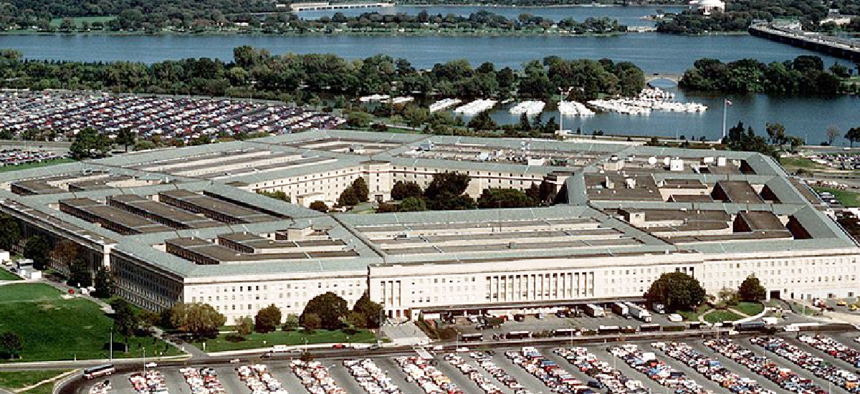How the Pentagon copes with funding hiccups

The Government Accountability Office examines some of the Defense Department's tactics to lessen the effects of inconsistent funding during continuing resolutions.

Optional caption goes here. Optional caption goes here. Optional caption goes here. Optional caption goes here.
The Defense Department has learned to cope with inconsistent funding when Congress fails to pass spending bills by the start of the fiscal year, according to a recent watchdog report.
The Government Accountability Office found that DOD and the military services have developed tactics to lessen impact of continuing resolutions (CRs), stopgap bills from Congress that permit government spending to stay operational, despite constraints on starting new programs.
“We found that the military services generally obligated a lower percentage of annual funding in the first quarter of fiscal years 2017, 2018, and 2020 when under a CR, as compared with the other quarters of the year,” the GAO wrote.
“When there was no CR in fiscal year 2019, the military services generally obligated funds at a higher rate in the first quarter of the fiscal year than they did during the same period for years when there was a CR.”
DOD has operated under CR funding 11 of the past 12 fiscal years, with 2019 being the exception. During those years, CR funding lasted from 76 to 216 days. As a result preparing for CRs has also become routine including developing spending plans to account for up to a 90 day funding freeze and adjusting contracts to reflect available funding, the report states.
And while military service leaders cited spending constraints on major defense acquisition programs, the GAO found that program costs and delays were kept in check under continuing resolutions as major defense acquisition programs are primarily funded through multi-year amounts in research, development, test and evaluation and procurement appropriations.
“According to these officials, CR restrictions can delay the initiation of new acquisition programs, the transition of existing acquisitions programs from the research and development phase into the procurement phase, and the increase of an acquisition program’s production rate, which may result in cost increases to those programs,” the report states.
But GAO's analysis of selected acquisition programs did not find any instances where this occurred.
Instead, the military services will push back service contract start dates and nonessential purchases or training to later in the fiscal year with officials noting “there are fewer opportunities to reduce spending later in the year” the longer a CR lasts.
A provision in the 2020 National Defense Authorization Act tasked GAO with reporting on the effects continuing resolutions have on spending, acquisitions and personnel practices and hiring.
The GAO found that civilian hiring jumped about 25% (from about 200 to 250 per day) in fiscal 2020 after appropriations kicked in following a CR. Rates also varied by organization with the Army hiring the most civilians during CRs but the Air Force having the highest percentage of civilian hires over other defense organizations between 2017 and 2020.
“We also found that civilian hiring fluctuates throughout the fiscal year, regardless of whether DOD is operating under a CR. While lower hiring does seem to correlate with periods of the CR, lower hiring also occurred at similar points in the year when there was no CR in place,” the report states, noting that delays in the lengthy civilian hiring process are also a factor.



